Ahead of the SCCA National Runoffs here is a quick guide for understanding the various classes. At first glance the SCCA Road Racing classes can look like alphabet soup. This guide provides a way to decode the various Classes often only listed on the schedule by their initials. Most of them are abbreviations but a few can be tricky. With an ever changing rule book, some cars might move between the classes from year to year so check the latest SCCA General Competition Rules for the most current information.
American Sedan (AS)
Focuses on American production V8 cars with modified suspension and brakes. Example cars include the Ford Mustang, Chevrolet Camaro, Pontiac Firebirds and the Cadillac CTS-V.
American Sedan (AS) Photo Courtesy of SCCA San Francisco Region
B-Spec (BS)
Small fun to drive sub-compact cars with minimal preparation. The class aims at providing competitive racing at a lower cost. Car modifications are specified and weight penalties are used between the different makes to ensure performance parity. Example cars include the Honda Fit, Mazda 2, Chevrolet Sonic and the Mini Cooper.
B Spec (BS) Photo Courtesy of the Sports Car Club of America (SCCA)
E-Production (EP)
E-Production is the fastest of the production classes and features racing from classic and contemporary production based sports cars. Example cars include the Datsun 240z, Mazda Miata, Mazda RX-7, Honda S2000, Triumph TR6, Caterham 7 and the BMW Z4.
E Production (EP) Photo Courtesy of SCCA San Francisco Region
Formula 500 (F5)
These open wheel Formula Cars used to use less than 500cc two stroke motors coming from snow mobiles. New motors are now available to use including the 593cc Rotax with added weight penalty. No internal engine modifications are allowed. The cars also use unique elastomeric "pucks" for suspension instead of traditional dampeners. The chassis and bodywork are defined by tight dimensional restrictions.
Formula 500 (F5) Photo Courtesy of Ben Beames
Formula Atlantic (FA)
One of the fastest classes in SCCA, these cars feature full ground effects and large front and rear wings. There are a variety of different chassis including the Swift 014a, Swift 016a and Ralt RT41. There are also multiple engine options available including those from Mazda, Toyota and Honda. The cost of the class however has often resulted in small fields of cars.
Formula Atlantic (FA) Photo Courtesy of SCCA San Francisco Region
Formula 1000 (FB)
These open wheel cars use 1000cc motorcycle engines with a chain driver that are high reving and make the cars sound like high performance street bikes or older F1 cars. Some cars are converted from Formula Continentals (FC) or Formula Fords (FF) but specific chassis can also be purchased from a variety of manufacturers.
Formula 1000 (FB) Photo Courtesy of SCCA San Francisco Region
Formula Continental (FC)
There are a few types of cars that can run in Formula Continental (FC) but the most common you will see is the Formula Ford 2000 (FF2000). You can spot these cars by the snorkel like intake on the driver right hand side. Many cars use a flat bottom steel tube frame chassis. Limits on the front and rear wing limit the aerodynamics. The FF2000 series is also part of the Mazda Road to Indy program.
Formula Continental (FC) Photo Courtesy of SCCA San Francisco Region
Formula Enterprise (FE)
Built by SCCA Enterprise the Formula Enterprise is a Specification Formula car built for competitive open wheel racing in the SCCA Championship. Major components such as the Engine, Transmission and Shocks are all sealed to ensure close competition and reduce costs.
Formula Enterprise (FE) Photo Courtesy of SCCA San Francisco Region
Formula F (FF)
Previously known as Formula Ford running the 1600cc Kent engine, the class was recently opened up to include a 1.5 liter Honda Fit motor. The cars have narrow tires and no wings making for some great open wheel racing. The class has been around for over 45 years and has a history of being a starter series for professional racers. There are a variety of different chassis manufactures including Lola, Van Diemen and Reynard.
Formula F (FF) Photo Courtesy of SCCA San Francisco Region
Formula Mazda (FM)
Formula cars using a sealed 13B Mazda Rotary engine for high revving action and the occasional flames out the exhaust. Cars have steel tube frame chassis, with in-board front shocks operated by upper rocker arms. The cars also feature a front and rear wing. Formula Mazda is often seen as a stepping stone to the Pro-Mazda Championship and the Mazda Indycar ladder system. If you want Braap Braap in your Formula car this is the race car for you.
Formula Mazda (FM) Photo Courtesy SCCA San Francisco Region
F-Production (FP)
Lots of great sports cars racing here including some older classics. Example cars include the Mazda Miata, Triumph Spitfire, Lotus Super Seven, Lancia Scorpion and the Fiat 124 Spider.
F-Production (FP) Photo Courtesy of SCCA San Francisco Region
Formula Vee (FV)
The Formula Vee is a low cost Formula car, with a long racing history of over 50 years. Designed around the 1963 Volkswagen Beetle using chassis and engine parts from a broader range of years. The cars use the 1200cc engine, transmission and front suspension from the VW beetle and a variety of different steel tube frame chassis. The car is popular due to the low cost and ease of building your own chassis, car or even kit from various manufacturers. The low horsepower and skinny tires makes for some great momentum racing.
Formula Vee (FV) Photo Courtesy of SCCA San Francisco Region
Grand Touring
This class uses highly modified purpose built race cars that allow tubular frame chassis. The cars maintain the appearance of sports cars and sedans but are often completely different underneath the bodywork.
Grand Touring 1 (GT1)
Grand Touring 1 is the fastest of the grand touring classes and are closely related to the Trans-Am Series cars. Retired older cars from the Trans-Am Series often end up competing. Example cars include the Porsche GT3 Cup, Chevrolet Corvette and the Ford Mustang.
Grand Touring 1 (GT1) Photo Courtesy of SCCA San Francisco Region
Grand Touring 2 (GT2)
These cars are lighter and have less power than the GT1 cars. Example cars include the Porsche 944, Porsche GT3 Cup, Chevrolet Corvette and the BMW M3.
Grand Touring 2 (GT2) Photo Courtesy of SCCA San Francisco Region
Grand Touring 3 (GT3)
These cars are lighter and have less power than the GT2 cars. Example cars include the Mazda RX-3, Mazda RX-7, Nissan 240Z, Nissan 350Z and the Toyota Celica.
Grand Touring 3 (GT3) Photo Courtesy of the Sports Car Club of America (SCCA)
Grand Touring Lite (GTL)
These cars are the lightest and least powerful of the Grand Touring classes. Example cars include the Nissan 200SX, Nissan Sentra, Toyota Tercel, Mini Cooper, Honda CRX and the MG Midget
Grand Touring Lite (GTL) Photo Courtesy of the Sports Car Club of America (SCCA)
H-Production (HP)
Great racing featuring classic production sports cars. HP is the slowest of the production classes and includes example cars such as the Triumph Spitfire, MG Midget, Honda CRX, Honda Civic, Fiat X-1/9, Austin-Healey Sprite and the Volkswagen Golf.
H Production (HP) Photo Courtesy of SCCA San Francisco Region
Prototypes
Prototype 1 (P1)
These are purpose built race cars, featuring low production prototypes like the Norma M20, Stohr WF1 and the Elan DP02. Exotic looking and extremely fast, many with composite or carbon fiber chassis, high end suspension and race built motors.
Prototype 1 (P1) Photo Courtesy of SCCA San Francisco Region
Prototype 2 (P2)
These are purpose built race cars featuring the Stohr WF1 and the Radical Prosport.
Prototype 2 (P2) Photo Courtesy of SCCA San Francisco Region
Spec Race Cars
Spec Racer Ford Gen3 (SRF3)
The 3rd generation of the Spec Racer class with a lower minimum weight and increased horsepower rear mounted engine. These improvements have seen lap times reduced by 2-3 seconds at most tracks. The series still focuses on driver skill and reduced operating costs. You can differentiate the SRF3 from SRF by the orange roll bar tape, SRF3 decal on the side panel and engine sound.
Spec Racer Ford Gen3 (SRF3) Photo Courtesy of Meghan Frolli
Spec Racer Ford (SRF) GEN2
Built by SCCA Enterprises these are a single make specification class with tube frame fiberglass bodied sports racers. The cars use sealed transmissions, motors, suspension and specified parts include brakes. The use of standard controlled parts limits the spending for racers without the need to always buy the next exotic race part. The tightly controlled rule set ensures close competitive racing based on car preparation and driver skill. Note: As of 2018 the older Gen2 cars are no longer a separate national level class but still run in many regional competitions.
Spec Racer Ford (SRF) Photo Courtesy of Spencer Seim
Spec Miata (SM)
Various generations of the Mazda Miata with limited and specified modifications. There are restrictors and weight penalties added to various generations to ensure parity in the field. The class has a low cost of entry and lots of close competition making it one of the most popular classes for amateur racing.
Spec Miata (SM) Photo Courtesy of SCCA San Francisco Region
Super Touring
Super Touring Under (STU)
Features production based vehicles that are mid-level performance cars of 3.2 liters and under. Car models must be newer than 1985. Cars can be front wheel drive, rear wheel drive, naturally aspirated or turbo charged on some models. Engine swaps are also allowed. The class is similar to World Challenge cars providing an avenue for those race cars to compete in club racing. All these opportunities allow for a lot of development and options for car builders and tuners. Examples cars include the Lotus Elise, BMW M3s, Honda Integras and Civics.
Super Touring Under (STU) Photo Courtesy of SCCA San Francisco Region
Super Touring Lite (STL)
Similar to STU except these are smaller bore cars of 2.0 liters and under. Examples cars include the Honda Civic, Honda CRX, Honda S2000, Acura Integra, Mazda Miata and the Mazda RX-7.
Super Touring Lite (STL) Photo Courtesy of the Sports Car Club of America (SCCA)
Touring
The touring categories are numbered so that they group different high performance production cars into either T1, T2, T3 or T4. Cars typically have some allowed modifications within proscribed limits. Common modifications include roll cages, race seats, harnesses, stripping the interior and other safety features. There are limitations on the suspension, brakes and engine modifications. For the most part these cars are race version of common production cars with the same exterior look.
Touring 1 (T1)
The fastest of the touring cars including Porsche 996, Accura NSX, Audi R8, BMW E46 M3, Dodge Viper and Nissan GTR.
Touring 1 (T1) Photo Courtesy of the Sports Car Club of America (SCCA)
Touring 2 (T2)
The Touring Classes (T2-T4) are intended for commonly available recent model production vehicles to race in competition. The cars are grouped based on performance and allow minimal modification for race preparation. T2 cars include the Acura TL, BMW M235i, Cadillac CTS-V, Chevrolet Corvette, Ford Mustang, Mitsubishi Lancer EVO, Nissan 370Z and Subaru Impreza WRX STi.
Touring 2 (T2) Photo Courtesy of SCCA San Francisco Region
Touring 3 (T3)
Touring 3 (T3) cars include the Audi TTS, BMW SpecE46, Chevrolet Camaro, Ford Focus RS, Honda S2000, Lotus Elise, Mazda MX-5, Nissan 350z, Porsche Boxster and Volkswagen GTI.
Touring 3 (T3) Photo Courtesy of the Sports Car Club of America (SCCA)
Touring 4 (T4)
Touring 4 (T4) cars include the Acura Integra, Dodge Dart, Honda Civic, Mazda Miata, Mazda RX-8 and Toyota FRS.
Touring 4 (T4) Photo Courtesy of the Sports Car Club of America (SCCA)

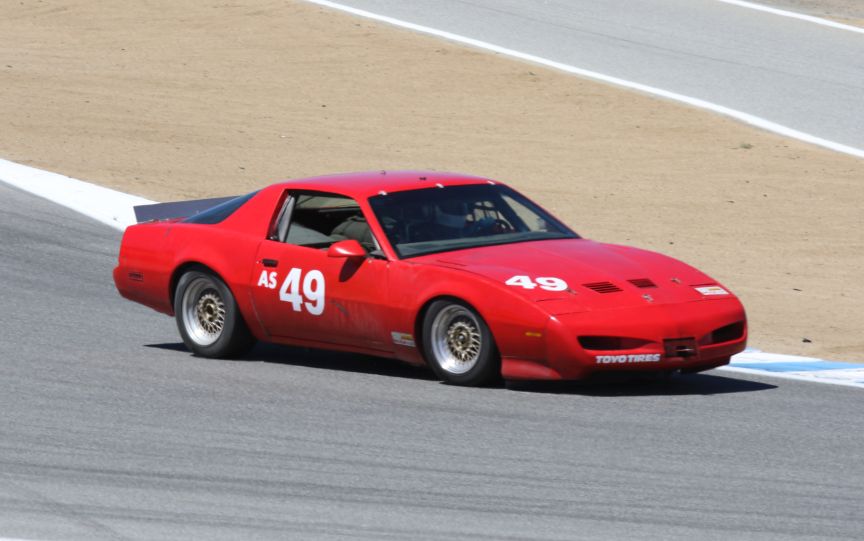



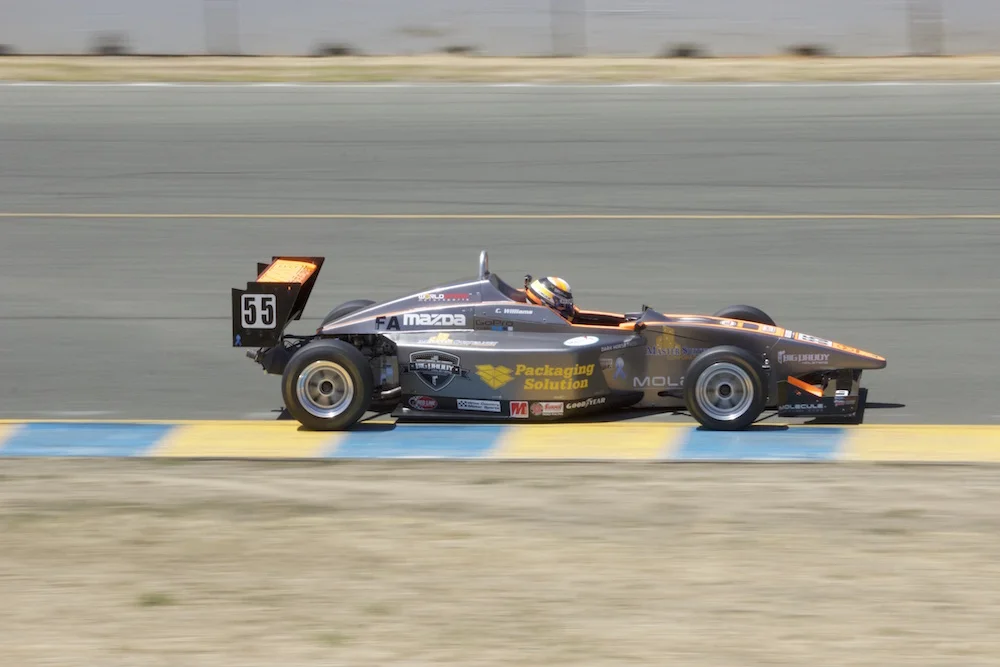






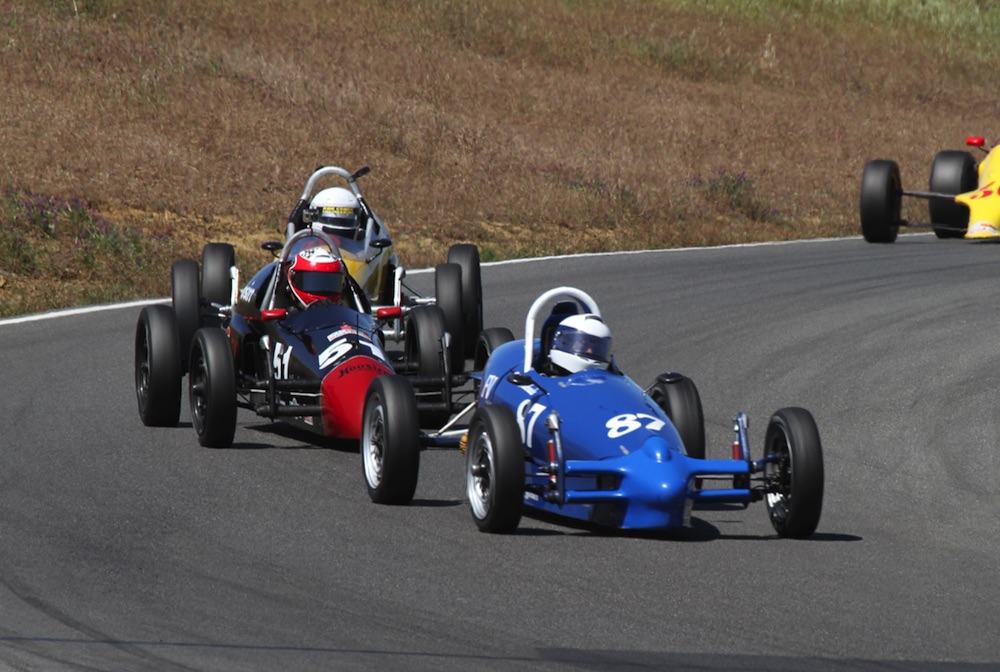





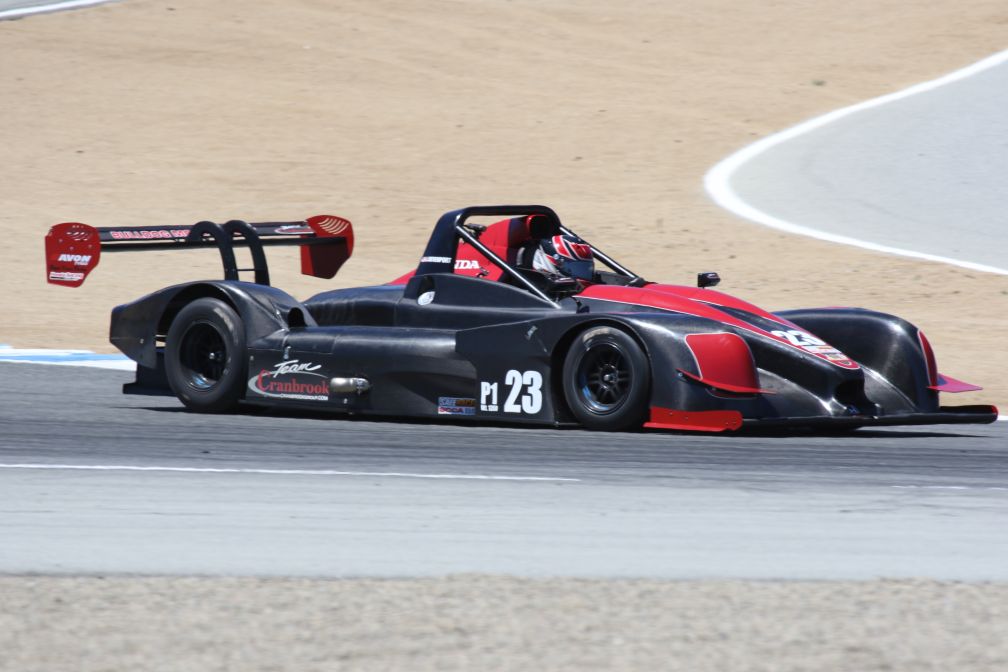



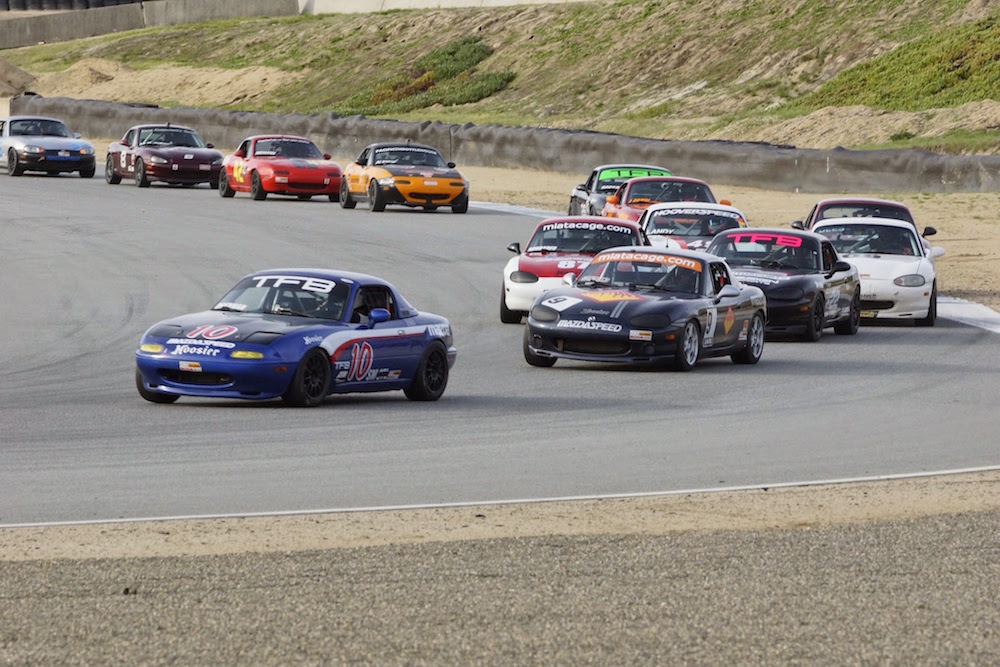


















With the Holiday Season fast approaching, what do you get the racecar driver in your life? Why not get them some new safety gear, a useful tool or even some track side apparel.